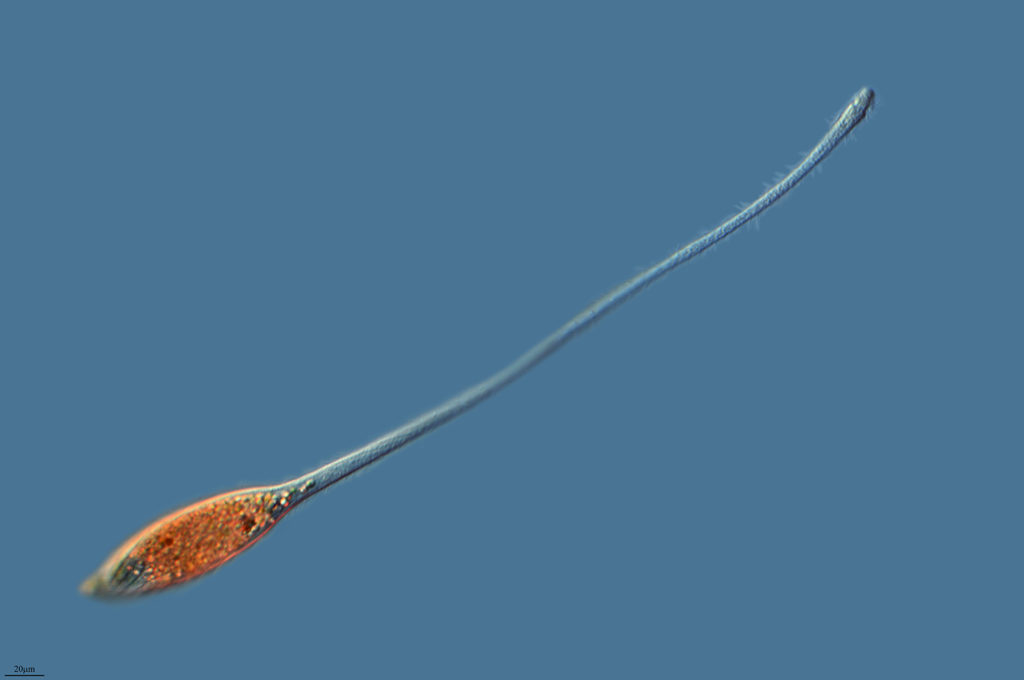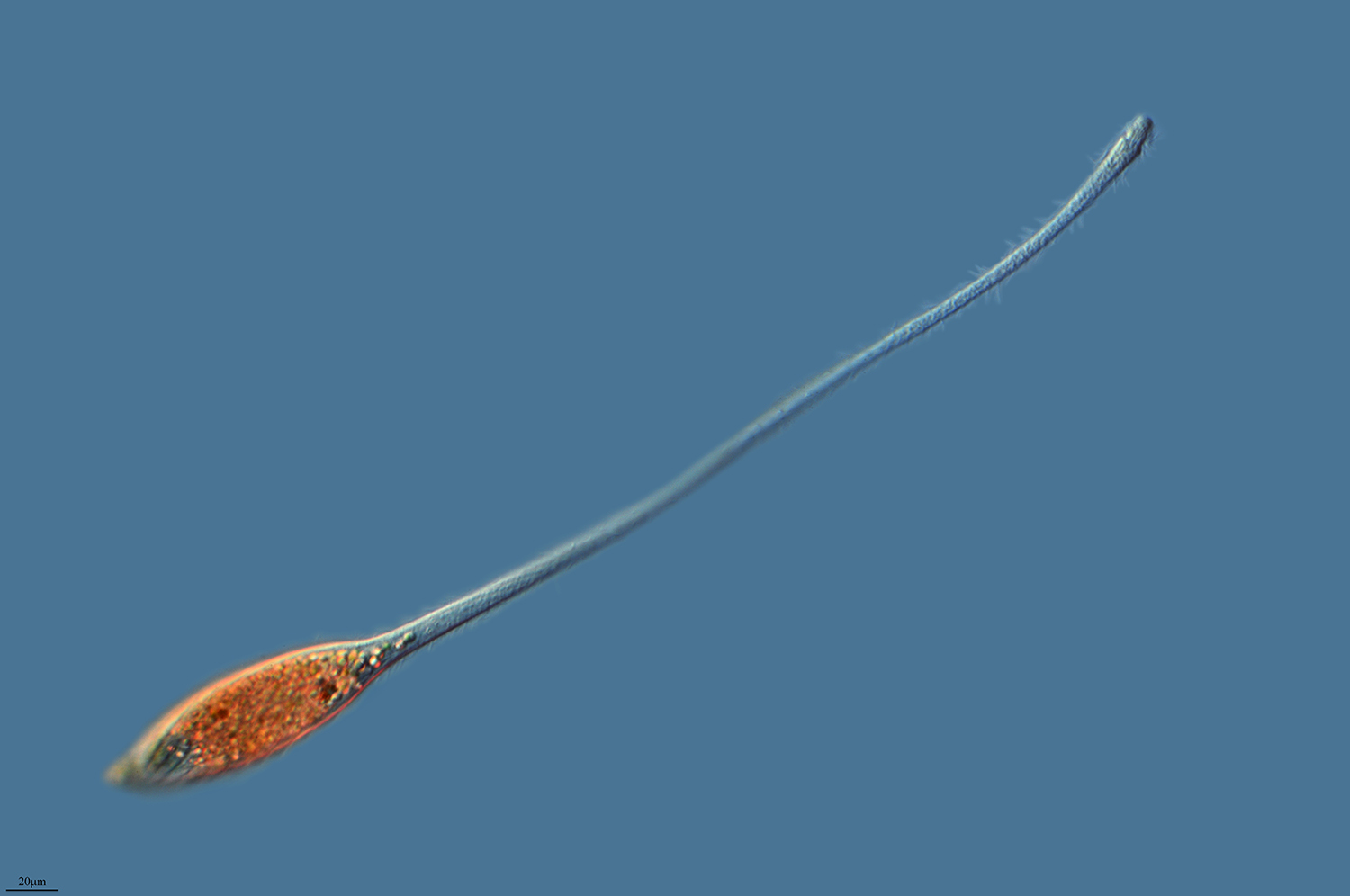The microorganism that provides insight into existentialism.
Deep in the crevices of a pond, microorganisms fight to survive. From fishes to bacteria, every creature desires to live and will stop at nothing to keep doing so.
Zooming in on one particular bacterium in the pond, we see a long predatory ciliate, named Lacrymaria olor (Latin for “tears of a swan”). The ciliate captures and brutally murders its prey by taking large bites out of their bodies, or releasing molecules to kill them, depending on their size. The bacterial equivalent of a murderer, the predator sometimes ingests prey whole.

Pretty horrifying, right? A savage microorganism, preying on many innocent others. In reality, evolution has trained us to kill or be killed, and this phenomenon performed by the bacterium in question gives us insight into the point of life.
About 4.5 billion years ago, long before schools, computers, or vloggers existed, there was supposedly an explosion, known to many as the Big Bang. The Big Bang was pretty awesome. In less than a second, the universe expanded, transforming from being smaller than an electron to being the current vastness of the cosmos we know today.
When this explosion happened, life did not exist. However, 800 million years later, something changed (1). A source of energy hit the inanimate objects and abiotic factors in the Earth, and life appeared as a result. These first organisms created their energy by feeding on inanimate material and everything around them (2).
Now, I promise, this isn’t a lesson about evolution—or perhaps it is? You are the reader, after all. I just want to ask this: Why did life appear in the first place? Why did the source of energy create life? There are many theories: ranging from life intentionally placed on Earth to life just existing… to live.
I subscribe to the latter theory, and here’s why: When life was first created, it consisted of unicellular organisms which couldn’t use oxygen for energy; they were so primitive and couldn’t compare to the diversity of life today. This biodiversity has proven an asset, though, from supporting life by different cycling of matter to new organisms to yielding more crops to support our diets.
So, what caused the biodiversity of the modern planet? Evolution. Organisms gradually changed because of processes like natural selection, gene flow, and genetic drift. To briefly summarize these concepts, natural selection is the survival of the fittest and involves organisms with the most favorable traits surviving and passing them on; gene flow is the flow of different traits from community to community; genetic drift is composed of chance events, and things that remove traits from a population. There are 2 effects within genetic drift, one being the founder’s effect, and one being the bottleneck effect. The founder’s effect is caused by a few organisms leaving a larger population to start their own. They may only have certain alleles and not be representative of all the alleles in the population, which would create less genetic diversity. The bottleneck effect is caused by chance events like natural disasters that wipe out a part of a population, removing some alleles from the genetic makeup of the population.
However, why has evolution made us simply, for lack of better word, better at surviving? Why are we adapting to our environments? Because we want to survive.
So is life just pointless then? Do we exist solely to survive? Not true at all. First off, it’s a pretty cynical worldview to take. Surviving and living for the sake of living is the evolutionary purpose of life. What’s your conscious purpose of life? What makes you happy during the day, and what do you lie awake marvelling about at night? Think about it. If there’s no purpose we’re given, we can just make our own. Why don’t we just carve our own paths and help the world in any way we can? Follow your purpose, because it’s the only part of life that really matters. This school of thought is called existentialism.
There are a few other schools of thought that exist too. There’s Albert Camus’ belief that life is pointless and that it’s an endless cycle of sadness. I don’t recommend subscribing to that one though—it’s a real downer. Existential nihilism is pretty similar, stating that life cannot have meaning and there is no point to anything. Finally, the belief that life is about pleasure, and maximizing in-the-moment happiness is known as Hedonism, and was the oldest philosophical school of thought ever recorded.
Regardless, bacteria are at the core of life, and they end up being pretty awesome in their own ways. Who wouldn’t love a vicious predator that takes chunks out of other unicellular organisms?
One of these, Bacillus Subtilis faces constant uncertainty after every cell division. Every time it divides, it has a 1.25 percent chance of entering a “chained” state, during which it is unable to move or divide for a period of time. Furthermore, when the microorganism faces environmental pressures, it has a chance of turning into an endospore, a dormant, tough structure where it becomes paralyzed-ish for the rest of its life (3). The chance is rather small because it’s an irreversible state, and B. Subtilis will try to do anything but that to stop the pressures it’s facing. Alas, in a few cases, safety comes first, and the endospore forms.
Another bacterium, Pseudomonas syringae, attacks plants not with stingers or infections, but with ice. Using proteins on its surface, this bacterium is literally able to produce ice and attack plants—this ice is also used to make commercial fake snow (4)! Certain amino acid sequences used in these proteins can change water and its state, which Pseudomonas syringae takes advantage of.
If this hasn’t given you enough proof that bacteria are awesome, here’s how to learn more:
- Watch the YouTube Journey to the Microcosmos, which deals with all amazing microorganisms around the world. I know, something mildly productive on YouTube.
- Look up ‘awesome bacteria’. I did that for this article, and was awed by the results.
- Read through the citations 🙂 for some awesome resources in general.
– Nina Khera
References
- Early Life on Earth – Animal Origins. (n.d.). Retrieved October 07, 2020, from https://naturalhistory.si.edu/education/teaching-resources/life-science/early-life-earth-animal-origins
- Lazcano, A. (2016). Alexandr I. Oparin and the Origin of Life: A Historical Reassessment of the Heterotrophic Theory. Journal of Molecular Evolution, 83(5–6), 214–222. https://doi.org/10.1007/s00239-016-9773-5
- Losick, R. (2014). A Love Affair with Bacillus subtilis. Journal of Biological Chemistry, 290(5), 2529–2538. https://doi.org/10.1074/jbc.x114.634808
- The effect of bacterial ice nuclei. (2016, April 23). Retrieved October 07, 2020, from https://www.mpg.de/10470442/ice-formation-bacteria-syringae
Image
- https://content.eol.org/data/media/7f/8d/a1/542.35076022215.jpg

